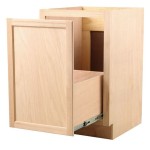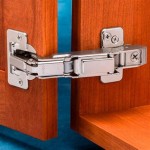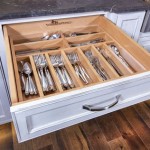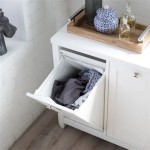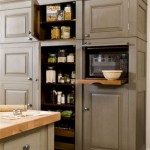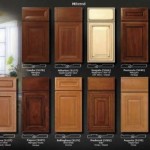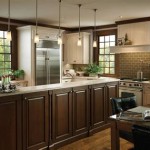DIY Cabinet Locks: Keeping Baby Safe
Keeping a curious baby safe from potential hazards in the home is a top priority for parents. Cabinets, with their enticing contents, often pose a tempting target for tiny hands. While commercial cabinet locks offer a convenient solution, savvy parents can find satisfaction and cost savings by embarking on a DIY project. With a few simple tools and materials, you can install effective cabinet locks, keeping your little one away from potentially dangerous items while ensuring peace of mind.
Choosing the Right Cabinet Lock
The first step in your DIY cabinet lock endeavor is selecting the appropriate type of lock for your needs. A variety of options cater to different cabinet designs and personal preferences.
- Magnetic Locks: These discreet locks utilize a strong magnet to secure cabinets. They are easy to install and require no drilling, making them a suitable choice for renters or those hesitant to modify their cabinetry.
- Latch Locks: Latch locks, often found on cabinet doors, consist of a latch and a catch mechanism. They are commonly used on kitchen cabinets and require drilling for installation. Various styles and finishes are available to match your decor.
- Button Locks: Button locks are compact and unobtrusive, featuring a small button that must be pressed to open the cabinet. They are typically installed on the inside face of the cabinet door and can be easily concealed.
- Childproof Cabinet Latches: These specialized latches are designed specifically for childproofing and come in various configurations. They are installed on the inside of the cabinet door and typically require a simple twist or push button to open.
Consider factors such as the type of cabinet, frequency of access, and your desired level of security when choosing a lock. For instance, a magnetic lock might suffice for a pantry door, while a latch lock may be more suitable for a cabinet containing cleaning supplies.
Installation Process: A Step-by-Step Guide
Once you have selected the appropriate lock, you can proceed with the installation process. The steps vary depending on the specific type of lock you choose. However, the following general guidelines apply:
Magnetic Locks
- Clean the surface of the cabinet door where you intend to install the magnet.
- Peel off the adhesive backing on the magnet and firmly press it onto the door.
- Attach the corresponding metal plate to the cabinet frame.
- Test the lock by closing the cabinet door and ensuring it remains securely shut.
Latch Locks
- Mark the location for the latch and the strike plate on the cabinet door and frame, respectively.
- Drill pilot holes at the marked locations.
- Using a countersinking drill bit, enlarge the holes for the screws.
- Attach the latch to the cabinet door and the strike plate to the frame.
- Test the lock to ensure it functions properly.
Button Locks
- Mark the desired location for the button lock on the inside face of the cabinet door.
- Drill a pilot hole at the marked location, slightly smaller than the diameter of the button lock.
- Insert the button lock into the hole and secure it with a nut or screw, depending on the lock's design.
- Test the lock by pressing the button and ensuring the cabinet door opens and closes smoothly.
Childproof Cabinet Latches
- Follow the manufacturer's instructions for installation, as these latches typically have specific mounting configurations.
- Carefully align and attach the latch to the inside of the cabinet door.
- Position the latch mechanism on the cabinet frame and secure it in place.
- Test the latch to ensure it functions correctly and is easy to operate for adults while being difficult for children to release.
Additional Safety Tips
While installing cabinet locks is an important step in childproofing your home, additional safety measures can further enhance your efforts. Implement these tips to create a safer environment for your little one:
- Store dangerous items out of reach: Always place cleaning supplies, medications, and other potentially harmful substances in high cabinets or locked storage areas.
- Install childproof latches on drawers: Similar to cabinets, drawers can contain tempting items that could pose a danger to young children. Install childproof latches or drawer locks to secure these areas.
- Use cabinet door stops: Cabinet door stops can prevent sharp edges from hitting children and minimize the risk of injury.
- Teach children about safety: As your child grows, begin teaching them about safety hazards and the importance of asking permission before opening cabinets or drawers.
By taking a proactive approach to childproofing your home, you can create a safe and nurturing environment for your baby to explore and grow.

Easy Fix For Baby Latch Diy Stuff Proofing

Inexpensive And Effective Cabinet Lock For Baby Proofing Diy Stuff S

10 Clever Low Cost Diys To Baby Proof Your Home

Best Diy Child Proof Drawer Appliance Latch 5 Steps Instructables

Rimiclip A New Kind Of Painless Child Safety Latch Baby Proofing S Toddler

10 Clever Low Cost Diys To Baby Proof Your Home

Lazy Susan Child Lock Apartment Decorating Living Baby Proofing Childproofing

Our Favorite Baby Proofing Tools Reviews By Wirecutter

10 Clever Low Cost Diys To Baby Proof Your Home

Our Favorite Baby Proofing Tools Reviews By Wirecutter
Related Posts

